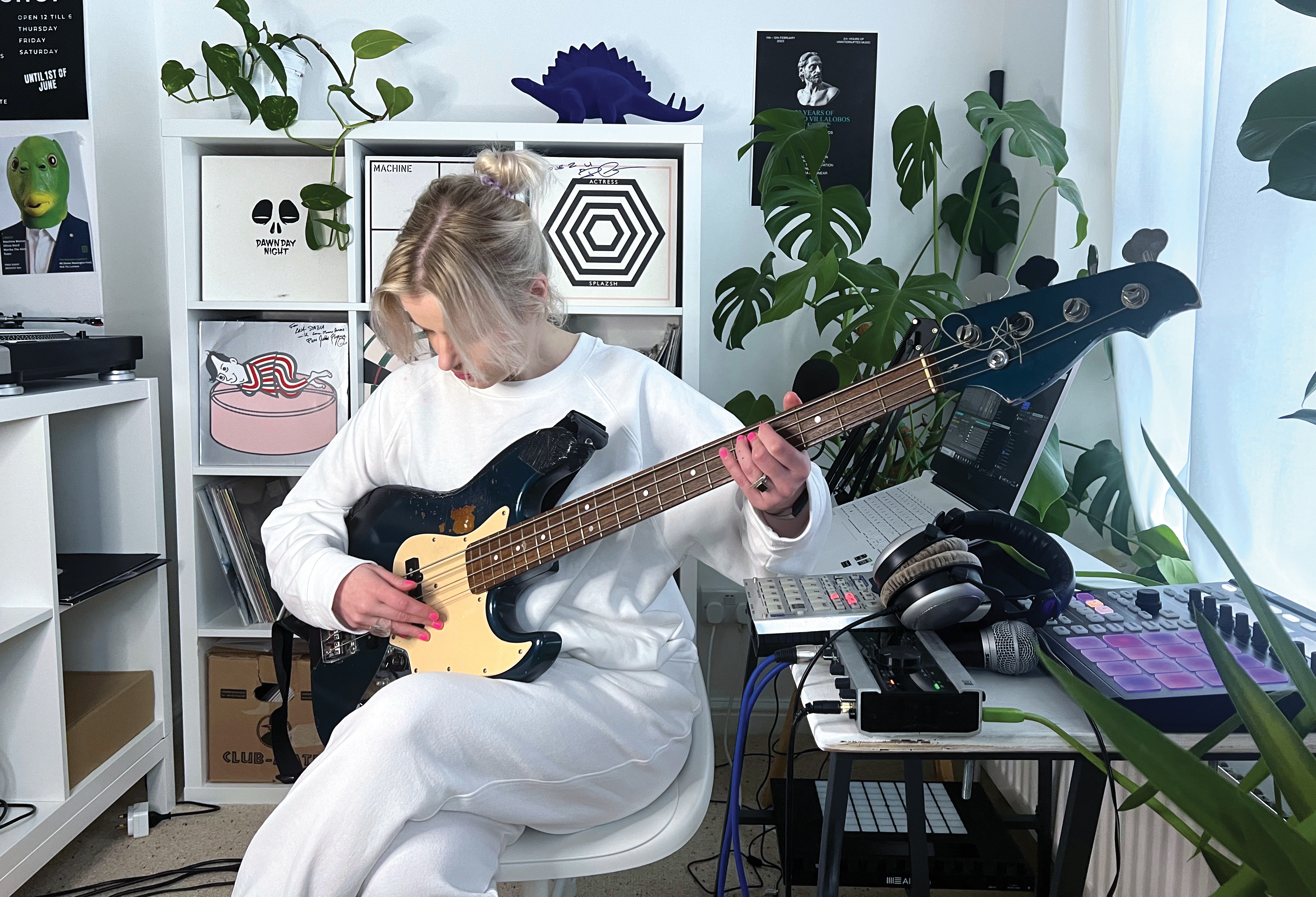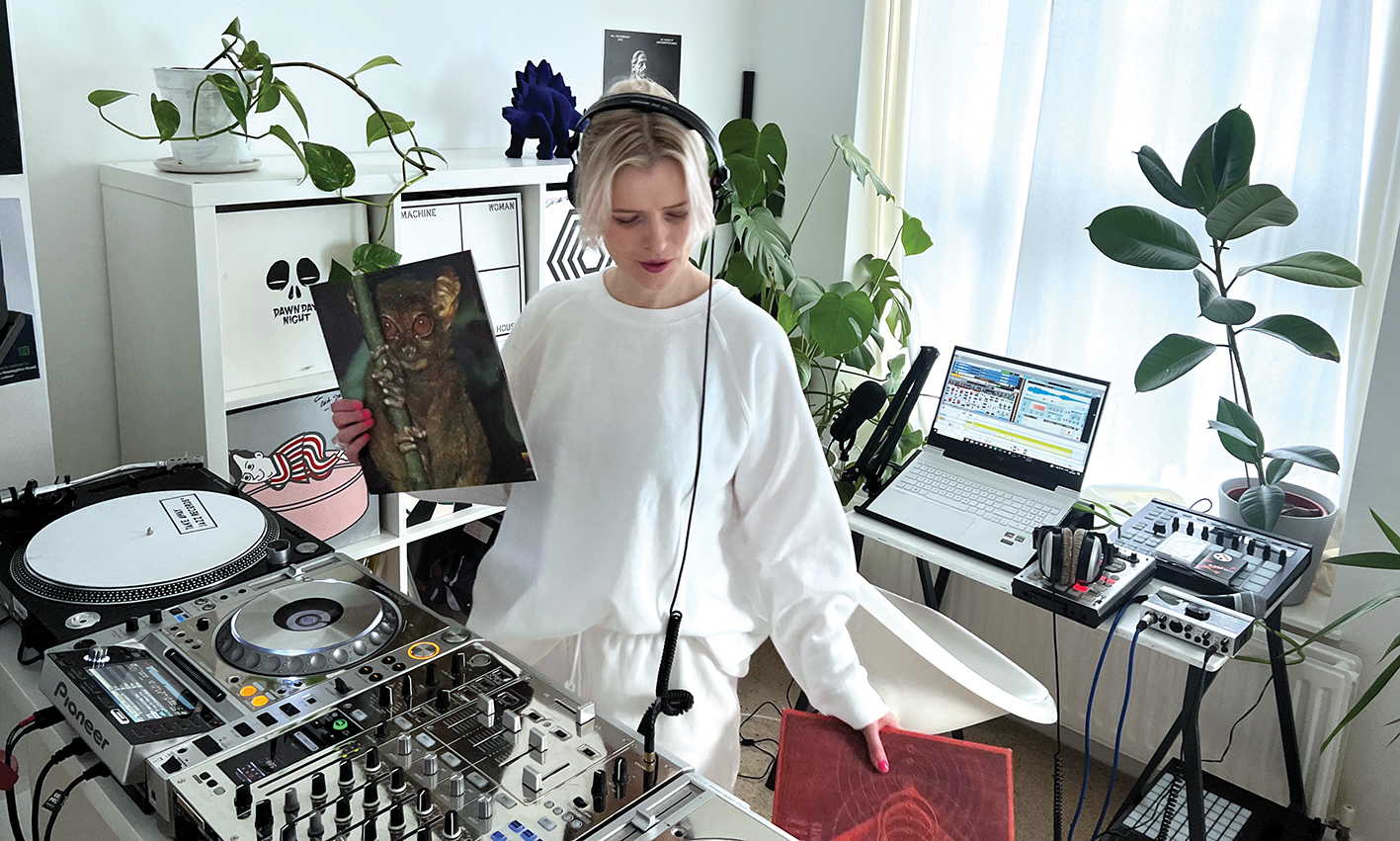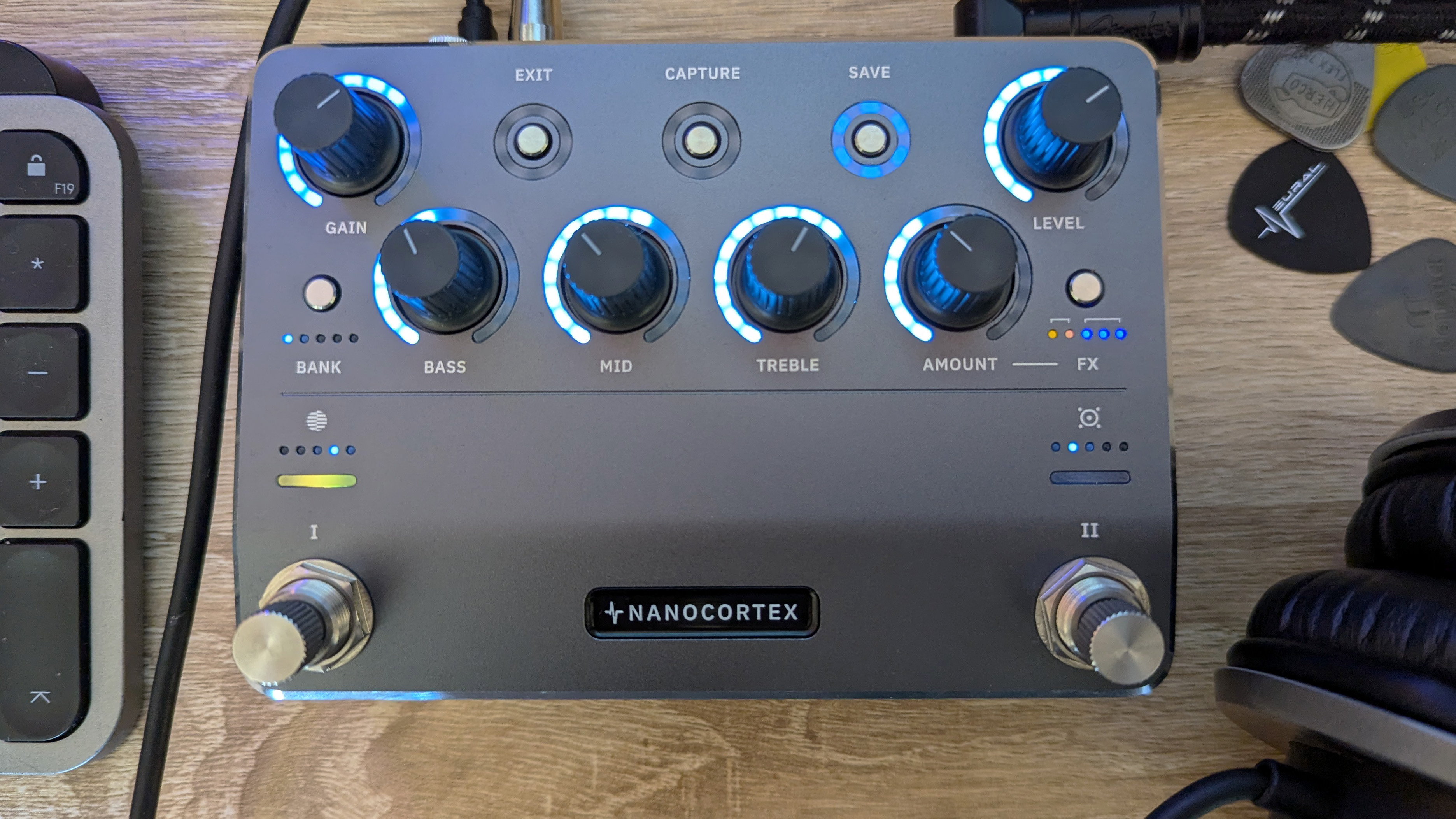Machine Woman: "Ableton changed my life, but I love using Reason 12, GarageBand and I’m exploring Fruity Loops. They all have their own personality - my sound evolves uniquely in each DAW"
Beyond her eccentric track titles and comical cover art, sound artist Anastasia Vtorova is on a mission to inspire. Danny Turner finds out more

Born in Russia but later based in Berlin and London, sound artist and image creator Anastasia Vtorova is rapidly building a name for herself on the electronic scene and throughout the dance music industry at large.
A regular host on Rinse FM, her experimental label, TAJR, acts as a voice for emerging talent in parallel with her Machine Sound Electronic Club – a free, monthly producer meet-up hosting lectures and listening sessions in response to demo submissions.
Meanwhile, Vtorova’s Machine Woman pseudonym displays her fervent curiosity for sound design. Treading a fine line between techno, house and the avant-garde, the producer has amassed a swarm of innovative releases signified by humorous track titles inspired by seemingly mundane everyday experiences.
Behind Machine Woman’s playful yet unnerving electronic abstractions, lies an artist who is clearly as sincere as she is eccentric.
Did your interest in electronic music begin in your native Russia?
“My introduction to electronic music began around the age of 11. I distinctly recall attending a disco at a summer camp where I first encountered Scooter and Euro Dance. The pulsating beats left me feeling exhilarated and uplifted. As I grew older, I ventured to a bunker club in St. Petersburg located next to a football stadium. The experience was intense, with exceptionally fast and hard music bordering on an indescribable form of techno. The atmosphere was terrifying, as the club was packed with football hooligans.”
We read that your mother did not approve of the music you were listening to?
Get the MusicRadar Newsletter
Want all the hottest music and gear news, reviews, deals, features and more, direct to your inbox? Sign up here.
“My mom had an extensive collection of vinyl, mostly consisting of peculiar Soviet bootlegs, reimagined originals and some spoken word stories for children. Her musical preferences were quite eclectic. I even brought her along to see The Haxan Cloak and Fuck Buttons at a venue in Nottingham, where she amusingly enjoyed the bass vibrations on the walls. But she wasn’t too thrilled when I sneaked away as a teenager to catch Slipknot playing at Rock City.”

At what point did you switch from playing in bands to working solo as an electronic music artist?
“My shift in musical direction happened when I relocated to London for art school. Despite actively seeking bands through Gumtree, I found the band experience often involved time-wasting and playing music I didn’t truly enjoy so I decided to delve into the possibility of being a solo artist.
"My musical tastes were evolving. I was a fan of Massive Attack and Portishead, which both incorporated electronic elements, and I delved deeper into electronic music through platforms like Last.fm. Discovering artists such as Raime, Regis and Demdike Stare, particularly through the Blackest Ever Black label, further ignited my enthusiasm. The Electronic Explorations podcast by Rob Booth also became a crucial resource, exposing me to a plethora of music during what was a transformative period for me.”
Did you move from Manchester to Berlin to get closer to the club scene?
“My initial move to Manchester was to immerse myself in the electronic scene. Playing at the Islington Mill venue in Salford exposed me to parties that stretched over several days with local DJs spinning techno. Hesska’s mind-blowing selections left a lasting impression and Gnod, the band behind the cassette label Tesla Tapes, and Michael Holland really influenced me during this time.
“The buzz about Berlin grew and I decided to explore the city further after attending Atonal in 2013. The captivating atmosphere, diverse techno sounds and just my comfort with being in Berlin prompted me to make the move in 2015. It took about a year before I became a regular at Berghain, but despite its allure I found my preference shifting towards smaller venues like OHM, Paloma Bar and Wilde Renate.”

What styles of music did you explore on early Machine Woman EPs?
“My first-ever release, Pink Silk, was influenced by minimal sounds, experimental textures, abstract bass and stretching samples, with the overall vibe maintaining a minimal approach. That sonic exploration continued on my second EP Genau House and even more prominently on For Sweden.
After moving to Berlin, my sound began to evolve towards faster rhythms and a more structured approach to creating tracks
“After moving to Berlin, my sound began to evolve towards faster rhythms and a more structured approach to creating tracks, but as time passed I adopted a more playful slant, incorporating elements of house music and less concern with adhering strictly to techno conventions. That shift allowed my music to evolve naturally and marked a more relaxed phase of musical exploration. My 2017 release Camile from OHM, Makes Me Feel Loved truly shifted towards a more playful approach to songwriting.”
FACT Magazine named you as a producer to watch in 2016. That must have been encouraging?
“Getting a nod from FACT Magazine was sweet, but I wasn’t exactly sure how to make the most of it. The week after the article came out I had about five booking agents reach out to me and it was interesting to see how a bit of recognition can lead to new opportunities.”
Do you find that there is more equality between men and women in dance music today?
“The dance music scene has seen some positive shifts, but let’s be real, there’s still a way to go in achieving full equality. Sure, there’s more awareness now and determined women in the industry, along with initiatives and collectives like Keychange, Saffron, Femme Bass Mafia, Shesaid.so, The Beatriarchy, and Fèmmme Fraîche, are kicking down doors.
“They’re inspiring a new wave of talent, even if that progress might not be the same across the board or in every corner of the scene. We all need to keep pushing for a dance music world where equality isn’t just a buzzword but a reality for everyone.”

Why did you start the Take Away Jazz Records label?
“I initiated TAJR while releasing music through other labels. The idea was essentially to explore direct connections with fans and share tracks that I felt inclined to self-release. This allowed for a more experimental and personalised approach to my sound, fostering a more direct and intimate connection with the audience.”
You’ve said that the label’s output is for “people who can’t sleep at night”. Tell us a bit more about that ethos and your future plans?
“It refers to the time when I typically immersed myself in music creation. Working with headphones, I used to find that night time was the most peaceful and creatively inspiring part of the day. Interestingly, my approach to music creation has evolved and I now find myself creating mostly during the day.
“Regarding future plans, there’s an upcoming vinyl release – a collaborative project with one of my favourite producers, HVL, who is a resident at the renowned Bassiani club in Tbilisi. I’m also going to change the name of the label to TAJR because people keep submitting jazz demos, and while I appreciate that, it doesn’t align with the label’s sound.”
You host a show on RinseFM. How did you get the gig and what sort of music do you play out?
“In 2018, RinseFM approached me for a three-month residency before offering me a regular slot. I’ve now hosted over 53 shows, featuring guest mixes from artists around the world such as Supply, Pholo, ROMsets, Rose Bonica, HEZEN, Machine Girl, and loads more. I’ve never believed in confining myself to a specific music genre – the show encompasses tech house, techno, jungle, breaks, noise, grime, and everything in between. I strive to introduce new talent to my audience and also to keep the show dynamic and free from constraints.”

You’re clearly keen to encourage sharing and inclusivity. Presumably, that’s why you started the Machine Sound Electronics Club?
“I launched Machine Sound Electronics Club with the aim of connecting like-minded individuals who share a passion for music production and a thirst for knowledge. It also serves as an experiment to confirm my ideas about building a community of producers. The project kicked off last year with four sessions, one held at Ableton HQ in London and the others hosted at The Marquis, a small club in Dalston.
“I curated an outstanding session featuring a lecture from Eone, an esteemed neo grime artist. Attendees were encouraged to submit tracks or works in progress and we played them on the club’s Funktion One speaker system. This allowed people to experience their productions on a large club setup, followed by guided feedback sessions.
I launched Machine Sound Electronics Club with the aim of connecting like-minded individuals who share a passion for music production and a thirst for knowledge
“The project’s presented a personal challenge for me to step out of my comfort zone and develop skills in public speaking, people skills and workshop presentation, but it’s on a brief pause at the moment as I search for a venue that might generously offer their space. I’m also exploring the possibility of testing the concept online.”
Through these events, do you also hope to sign experimental electronic artists to your label?
“The aim is to create a space where innovative and boundary-pushing electronic artists can be identified, supported and potentially find a home on the label. In addition, I recently did a mix for The Ravers Hour on BBC 6 Music where I had the opportunity to showcase one of the artists who participated in Machine Sound Electronics Club. The featured artist was an audio/visual talent from London performing under the name CSV. This not only highlights the collaborative aspect of the club but also extends the reach of emerging artists to broader platforms.”
Some of your song titles are rather eccentric, for example, Going to Lidl With My Pfand Bottles Our Eyes Met in the Cheese Aisles or Have You Been to Salford Shopping Centre, Have You Seen Argos?. To what extent is the presentation of your music satirical?
“The presentation of my music often carries elements of both satire and humour. I frequently draw inspiration from my daily experiences, weaving narratives into song titles that are crafted with a playful intent, offering a humorous commentary on the ordinary aspects of life. This approach allows me to tell a story about what’s been happening during the day and infuses the music with personal and relatable elements. I think it adds a unique and often whimsical layer to the creative process, inviting listeners to connect with the music in a more playful and narrative-driven manner.”

Tell us about some of the artwork on your releases. They seem to be hand drawn or made with MS Paint?
“Thank you for the compliment; it genuinely makes me smile – one of the best I’ve received [laughs]. The artwork on my releases is intentionally crafted to evoke a DIY aesthetic, often resembling hand-drawn or Microsoft Paint creations. For me, this complements the experimental nature of the music and adds a playful and raw quality.”
Do you think that we take dance music too seriously?
“I think that the seriousness attached to dance music can sometimes limit the freedom for exploration and experimentation. Music is an art form, and while it’s obviously essential to appreciate its depth and significance, a more light-hearted and playful approach can also open up new avenues of creativity.”
What was your first access to technology to help you make music? Was there any particular piece of gear that stuck out in your memory?
“My first access was through a basic computer setup using software and digital tools, which played a crucial role in shaping my early experiences in music production. Ableton changed my life, becoming a central part of my music production journey and has always been at the heart of my creative process. I also love using Reason 12 and Native Instruments’ Maschine. Occasionally, I delve into GarageBand and I’m currently exploring Fruity Loops. They all have their own personality and allow me to shape my sound in distinct ways. I’ve noticed that my sound tends to evolve uniquely in each DAW.”

The story of Elektron in 10 synths, samplers and drum machines, from SidStation to Syntakt
Have you expanded into using hardware too?
“I don’t have an extensive hardware setup, but I do sometimes rely on the generosity of my friends. I love visiting other people’s studios to see their unique setups and observe how they bring their creative visions to life. On one memorable occasion, I had the opportunity to jam with HVL in Tbilisi.
“He’s one of my favourite DJs and as a dedicated hardware producer and huge Aphex Twin fan, his love for his Elektron setup was evident. I found it to be a lot of fun, so I hope to add some Elektron to my studio in the future. I also have a Pioneer setup for my DJ work, including a limited edition silver DJM 900 Nexus mixer, two CDJ 2000 NEXUS decks and a Pioneer turntable.”
How do you typically start a track?
“I’ll randomly select a starting point based on my mood or creative intentions at around 135bpm. If I’m looking for a challenge, I’ll delve into Reason 12, but for a quick loop pack creation I’ll opt for Maschine and transfer elements into Ableton using Reason and Maschine as plugins.
“If a track isn’t clicking and I find myself stuck, I collect and save the work, and start a new project with a different BPM. I also frequently use my phone to capture ambient sounds, particularly during my travels. I might bring home a collection of sounds captured at the Baltic Sea, a bustling crosswalk in Tokyo or the distinctive underground sounds of Montreal.”
How do you rely on the software platform LANDR?
“LANDR is an excellent platform for samples, mastering and plugins. I’ve been a user for several years and find that its back end is really well-designed, user-friendly and particularly cost-effective for distribution. But while LANDR is a versatile tool, it does have its limitations, especially when it comes to placing music on platforms like Beatport.”
Was there a message behind the music on your recent EP, Elegance Becomes Violence?
“There’s always a message. This release came out in September on Delsin Records and can be interpreted as a social commentary. It reflects observations of human behaviour drawn from interactions with individuals who have entered my life, if only momentarily.”
Tell us about the vocals on the track Voices
“The track serves as a metaphor, exploring inner thoughts and the experiences within internal dialogue. The distinct tone in the voice emerged as I applied effects in Ableton and began manipulating the vocal loop through stretching and slicing. Using my voice as an instrument with quick edits and effects allows me to craft interesting sounds, often disguising the fact that they originated as a spoken vocal sample.”
What about your very latest release Shared Fantasies... is it strictly for clubs?
“It’s a fast-paced track, but it’s not solely meant for clubs. It’s also intended for the intimate setting of bedrooms and those late-night direct messages from people who definitely shouldn’t be sliding into your DMs. I like to think that adds a humorous touch to the multifaceted appeal of the music.”
Machine Woman's Elegance Becomes Violence is out now on Take Away Jazz Records.


“It’s radical. It’s like magic. I get chills”: How Rick Rubin’s philosophy of chance led System of a Down to the first metal masterpiece of the 21st century
“I just treated it like I treat my 4-track… It sounds exactly like what I was used to getting with tape”: How Yves Jarvis recorded his whole album in Audacity, the free and open-source audio editor




![Gretsch Limited Edition Paisley Penguin [left] and Honey Dipper Resonator: the Penguin dresses the famous singlecut in gold sparkle with a Paisley Pattern graphic, while the 99 per cent aluminium Honey Dipper makes a welcome return to the lineup.](https://cdn.mos.cms.futurecdn.net/BgZycMYFMAgTErT4DdsgbG.jpg)






